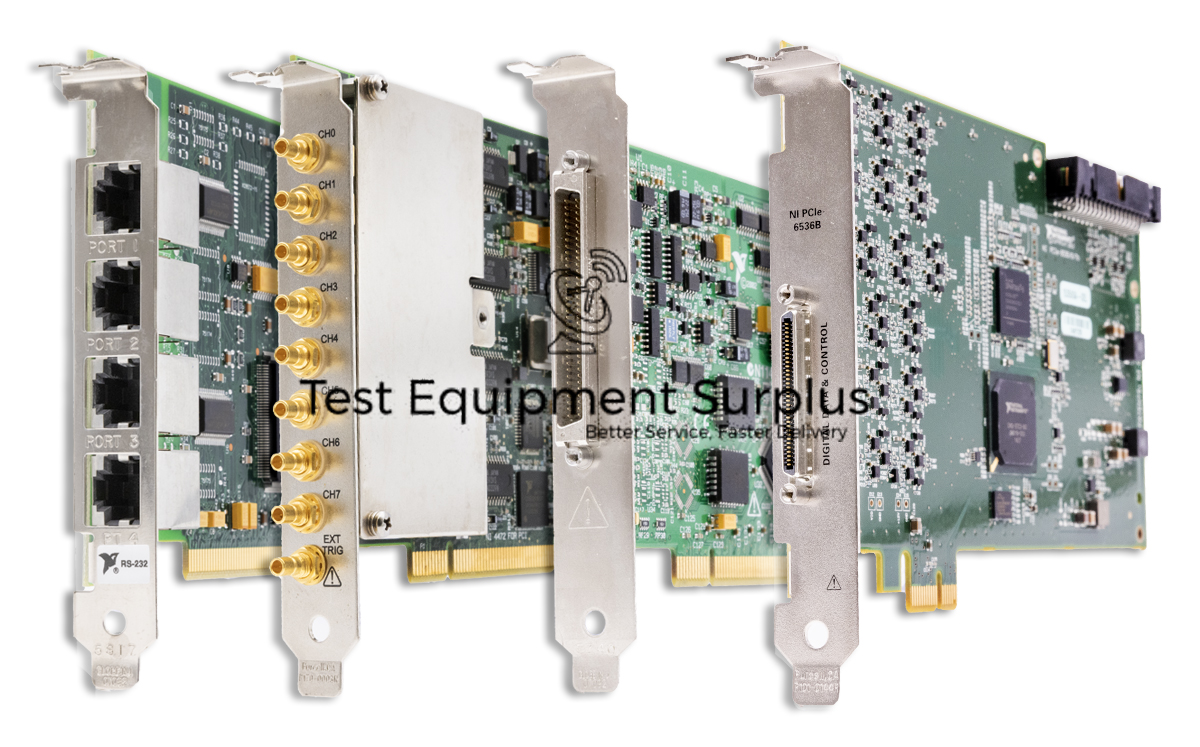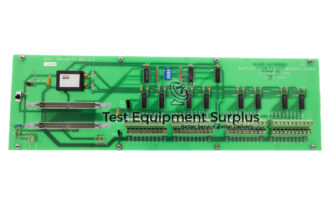Description
The National Instruments PCI-8511 CAN Interface Device, with part number 780682-01, is a high-performance interface designed for a variety of applications including rapid control, prototyping, bus monitoring, and automation. This device is supported by the robust NI-XNET driver, which employs a device-driven DMA engine to significantly reduce system latency from milliseconds to microseconds, thereby improving real-time performance.
Its powerful driver-level signal database engine supports a range of industry-standard database formats such as FIBEX, CANdb (.DBC), LDF, and NI-CAN NCD, facilitating seamless integration into embedded network design workflows. The PCI-8511 also features hardware acceleration for frame processing, which offloads tasks from the host system’s CPU and enables more efficient processing of complex tasks.
Compatibility with CAN, LIN, and FlexRay protocols ensures the device’s versatility in various communication environments, while the support for RTSI synchronization allows for easy integration with other National Instruments products. The device operates flawlessly on both Windows and LabVIEW Real-Time OS, providing users with the flexibility to work within their preferred development ecosystems.
| National Instruments PCI-8511 CAN Interface Device Specifications | |
|---|---|
| Part Number | 780682-01 |
| Manufacturer | National Instruments |
| Device Type | PCI-8511 CAN Interface Device |
| Driver Support | NI-XNET |
| DMA Engine | NI-XNET device-driven DMA |
| System Latency | Reduces from milliseconds to microseconds |
| Database Engine | Driver-level signal Database engine |
| Database Formats Supported | FIBEX, CANdb (.DBC), LDF, NI-CAN NCD |
| Hardware Acceleration | Hardware-accelerated frames |
| RTSI Synchronization Support | Yes |
| Protocols Supported | CAN, LIN, FlexRay |
| Operating Systems | Windows, LabVIEW Real-Time OS |
Question 1: What are the benefits of the device-driven DMA engine supported by the NI-XNET driver in the National Instruments PCI-8511 CAN Interface Device, and how do its capabilities contribute to improved real-time performance?
Answer 1: The National Instruments PCI-8511 CAN Interface Device improves real-time performance for rapid control and automation applications through its device-driven DMA engine that reduces system latency from milliseconds to microseconds, hardware acceleration for frame processing which offloads tasks from the host CPU, and its compatibility with various industry-standard database formats for seamless integration into embedded network design workflows.
Question 2: What are the advantages of using the National Instruments PCI-8511 CAN Interface Device in embedded network design workflows due to its driver-level signal database engine and compatibility with various communication protocols?
Answer 2: The advantages of using the National Instruments PCI-8511 CAN Interface Device in embedded network design workflows include its driver-level signal database engine that supports various industry-standard database formats for seamless integration, and its compatibility with multiple communication protocols such as CAN, LIN, and FlexRay, which enhances the device’s versatility in different communication environments.
Question 3: What advanced features of the National Instruments PCI-8511 CAN Interface Device contribute to its ability to reduce system latency and improve processing efficiency in various communication protocols?
Answer 3: The advanced features of the National Instruments PCI-8511 CAN Interface Device that contribute to its ability to reduce system latency and improve processing efficiency include its device-driven DMA engine, which lowers latency from milliseconds to microseconds, its driver-level signal database engine supporting various industry-standard formats for easy integration, hardware acceleration for frame processing to offload tasks from the CPU, and compatibility with RTSI synchronization for seamless integration with other National Instruments products.
Question 4: What are the benefits of the NI-XNET driver’s device-driven DMA engine in the National Instruments PCI-8511 CAN Interface Device, and how does it support various industry-standard database formats for embedded network design?
Answer 4: The NI-XNET driver’s device-driven DMA engine in the National Instruments PCI-8511 CAN Interface Device significantly reduces system latency from milliseconds to microseconds, enhancing real-time performance, while its signal database engine supports various industry-standard database formats like FIBEX, CANdb (.DBC), LDF, and NI-CAN NCD, which facilitates easy integration into embedded network design workflows.
Question 5: What features of the National Instruments PCI-8511 CAN Interface Device enable it to improve real-time performance for rapid control and automation applications?
Answer 5: The device-driven DMA engine supported by the NI-XNET driver in the National Instruments PCI-8511 CAN Interface Device significantly reduces system latency from milliseconds to microseconds, which contributes to improved real-time performance by allowing data to be transferred directly between the device and memory without burdening the CPU, thus facilitating faster and more efficient processing of control and automation tasks.



